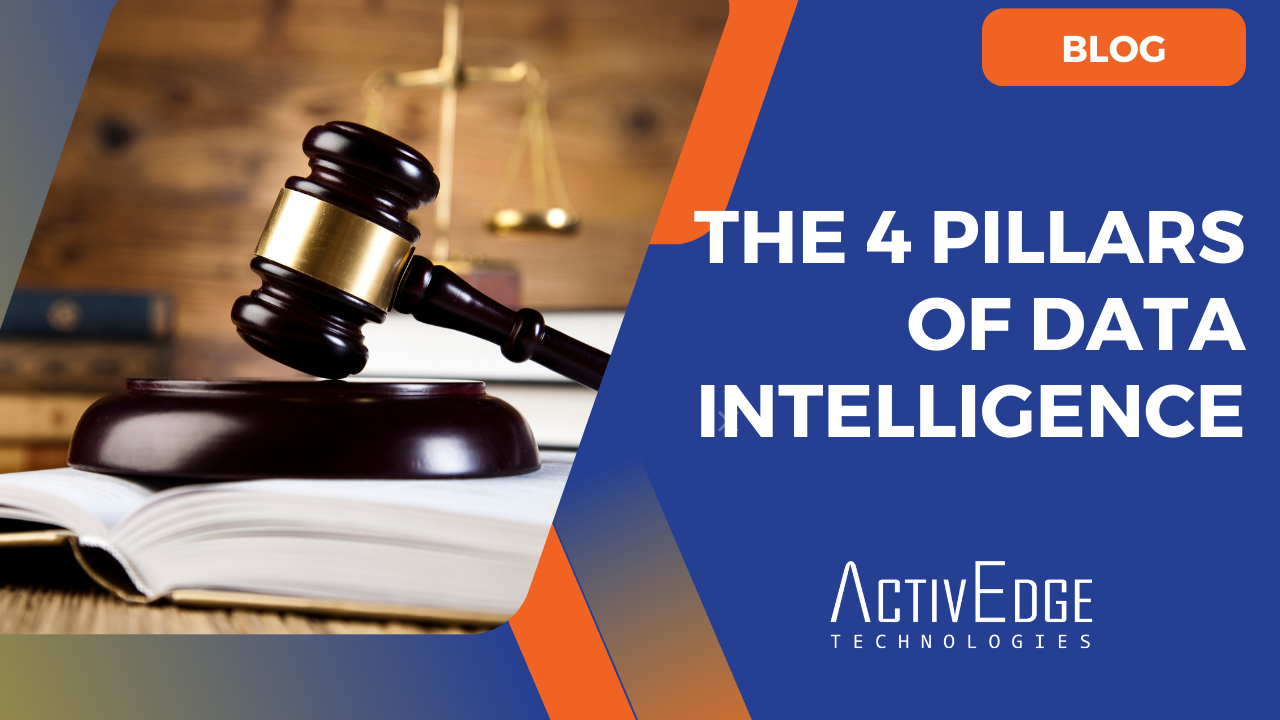Companies today handle a lot of data.
If that sounds familiar, you probably struggle with the feeling of data overwhelm: Having so much data, you don’t have a good idea about all the types you have or where it comes from. You may get it from data lakes, SaaS systems, data processors, or third-party sources.
While on the surface having a lot of data is often seen as a good thing, in reality, it presents a new set of challenges. You may be powerless to use the data you’ve collected due to the volume, sprawl, and unexpected types. This sheer volume of data also presents unique challenges for many stakeholders in your organization.
But perhaps the biggest problem is that not using or understanding your data sets you up for compliance risks.
Simply put, you need to understand your data better. From what you have, how it’s used, and the policies and compliance requirements that apply to it, data intelligence needs to be a priority.
You can use the four pillars of data intelligence to do just that.
Pillar 1: Understand Your Data
The first step is to get organized.
Because of how much data you have, leverage AI-driven data discovery solutions to complete this stage of the process in a timely manner. Classify and catalog data that comes from all structured and unstructured sources across every department.
When you’re finished organizing, the end product should be a complete catalog of data. It’s important you connect this to a business glossary. In order to understand the types of data you have, your whole team must be using the same terminology to define and describe it.
This includes the classifications of data, what types you have, where it’s located, and technical metadata.
Pillar 2: Ensure Data Governance
Data Governance is the concept and practice of making sure your data collection, storage, and use meet all applicable privacy rules and regulations. At this stage of gathering data intelligence, hone in on data governance specifics such as:
- Access
- Retention and residency
- Data minimization
- Data protection
If you find violations in any of these areas, address them immediately by applying controls to course correct them.
Make sure you define roles, responsibilities, and processes as you review data governance. Specific team members need to be held accountable for data assets in order to promote their use, improve their quality, and monitor for issues.
Pillar 3: Use Your Data
Instead of being paralyzed to take action on your data, getting to pillar three of data intelligence means you can finally use it. Because you’ve laid the foundation, you can now access and implement your data while maintaining compliance.
- You can search a catalog and find the data you need for your purpose.
- You understand your obligations and the requirements tied to your data.
- You have quick and easy access to the exact data set you need.
Everything is in place for the compliant use of the data more efficiently and effectively.
The final process is similar to the Amazon.com shopping experience: You can perform a simple search to find what you’re looking for. When you get there, you can order your product. In addition, the site will always provide suggestions, warnings, and feedback to help you make the best decision.
Pillar 4: Improve Your Data
In the final stage of data intelligence, you get to take your data to the next level.
Keep tabs on the maturity of your data governance through regular progress reports, feedback gathering, and trust scoring. Policy reviews and updates are also a must.
Set KPIs so you can measure the effectiveness of your data improvements over time. These should address pertinent questions:
- Is data being used more?
- What’s the ROI data brought to the organization?
- Is there any anecdotal evidence data intelligence efforts have been successful?
Conclusion: Automate your Data Intelligence
Executing the four pillars of data intelligence may take a long time and a lot of energy from your team if you do it manually. The best way to shortcut the process without trading accuracy is to automate it. Using automation will also allow you to scale smoothly as you onboard more data in the future.
When considering platforms that support data intelligence, look for a system that integrates privacy, security, and data governance applications. When you combine these purposes, you’ll drive better business use and outcomes from data. You’ll also make sure you’re meeting business and regulatory requirements by using data correctly to drive change and improvement.
The ActivEdge Data Governance is a cloud platform designed to deliver advanced data discovery and classification, cataloging, governance functionality, and the ability for business or technical users to find and request the data they need. Trust scores, feedback, and KPIs allow you to continuously monitor and improve your entire program over time and continuously encourage the intelligent use of data.
Next Step:
- Schedule a demo to learn more about our DataGovernance solutions





